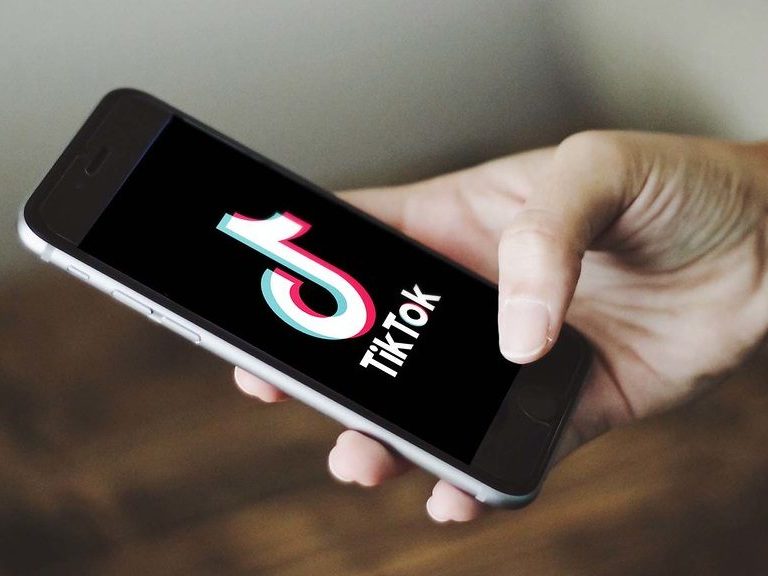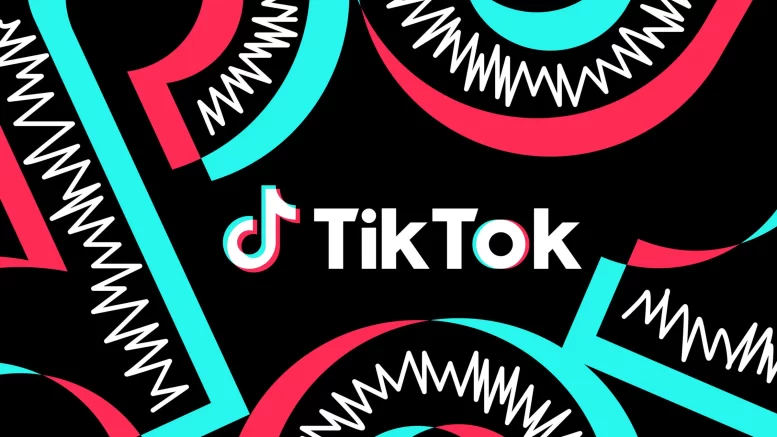
Introduction:
Social media is ruling today’s society. Platforms like TikTok have become into significant hubs for the emergence, diffusion, and popularization of many cultures and movements. Occasionally, politics and fashion trends can have an impact on everything. Similarly to the slang phrase “bro culture,” which is characterized by the promotion of toxic masculinity, the objectification of women, and the normalization of numerous negative behaviors. Relationships can suffer when personal development is restricted. TikTok, with its broad user base and democratized content creation, has the ability to defy these conventions. We will examine representative content creation and associated articles in TikTok in order to analyze how the platform challenges bro culture.

I. TikTok’s portrayal of bro culture
Bro culture has historically been frequently depicted in the media as a celebration of unashamed masculinity. Typically, it involves portrayals of groups of men who are linked by common hobbies like sports, drinking, and humor that is exclusively geared toward men. The prevalence of drug misuse inside fraternities is mentioned as a stereotype of fraternal culture in Marshall and LaNita et al.’s paper “Substance and Hookah Use and Living Arrangement Among Fraternity and Sorority Members at US Colleges and Universities” (Sidani et al., 2012). However, TikTok gives users the chance to take charge of their own representation, giving voice to underrepresented voices and viewpoints. Body shaming and excessive aesthetic standards are frequently encouraged in bro cultures. TikTok provides a platform where people may bravely confront this, celebrating the diversity of body forms and questioning conventional notions of beauty.The cultural landscape is becoming more inclusive and body-positive thanks to TikTok. A more inclusive and body-positive cultural environment is facilitated by TikTok.

II. Challenging the content of Bro Culture
It is well known that TikTok is actually a very free software that promotes and allows the freedom to post videos, as CE Noticias Financieras mentioned in his article tiktok can always stand for freedom ( Mexico Will Not Prohibit TikTok, Here There Is Freedom. AMLO, 2023).TikTok allows users to subvert bro-culture stereotypes through humour and satire.Many creators on TikTok use satire and parody to poke fun at and criticise toxic masculinity and bro-culture behaviour. By engaging with these stereotypes in a critical and humorous way, users challenge their normative.
i)LGBTQ+ individuals.
A well-known social networking site that enables users to make, share, and engage with short films is called TikTok. By offering users a variety of content, diversity is promoted. For instance, the tiktok spreads a lot of content about the LGBTQ+ community. Simpson and Semaan then stated in their article that TikTok’s algorithm supports the LGBTQ+ community by reaching out to a wider range of content (Simpson & Semaan, 2021). The typical bro culture, which is dominated by white, heterosexual, biopsychological males, is challenged by this variety. By sharing videos that highlight various gender identities and sexual orientations, LGBTQ+ individuals and organisations may promote understanding and advocacy. This can demonstrate the diversity of the LGBTQ+ community and aid in the fight against ignorance and discrimination. The conservative attitudes on gender and sexuality held by conventional fraternal culture are challenged, and inclusive and tolerant viewpoints are encouraged. Halpern and Gibbs then highlighted in their article, how social media platforms can empower individuals and marginalised groups (Halpern & Gibbs, 2013).

Every TikTok user is familiar with the “For You Page” tag, which exposes users to material from a range of producers and gives them the chance to learn about various viewpoints and experiences. By addressing the exclusivity of bro culture, this exposure may promote greater empathy and a more inclusive understanding of masculinity. Actively challenging toxic bro culture and emphasising empathy and respect for others by exhibiting positive characteristics of masculinity. Schippers (2007) argues that challenging traditional norms of masculinity can have positive outcomes for men and society as a whole. Encouraging a range of interests and behaviours can promote healthy relationships rather than the narrowness of fraternal culture and some of the other harmful aspects.
ii)Representatives of feminism
I’m sure it’s not hard for everyone who uses TikTok to find a lot of feminists speaking out on it. The objectification and marginalisation of women is one of the key issues that Bro Culture raises, and TikTok gives women a social platform to resist this norm. Women are frequently undervalued and underdiscussed in Bro Culture, yet they can express themselves freely without being objectified by mainstream media. When using TikTok, we frequently discover that many women are challenging and subverting negative preconceptions by using humour, sarcasm, and innovation. On TikTok, feminist video producers use their platform to spread awareness of a range of gender-related problems, such as toxic masculinity, misogyny, and gender violence. Their frequently brief movies and narrated parts efficiently engage a broad audience in critical discussion and convey complicated feminist principles.On TikTok, feminist content producers fight body shaming and objectification that are frequently associated with bro culture by promoting body positivity and self-love. Bussey and Bandura (1999) argue that the media can be a powerful tool for challenging stereotypes and promoting gender equality (Bussey & Bandura, 1999). TikTok’s ability to amplify women’s voices has contributed to this important social change.

iii)Positive role models
TikTok gives male content producers a platform to serve as positive role models by encouraging civil conduct and emotional intelligence. They continue to expand the positive aspects of bro cultures while excluding the negative ones through their films. These people utilise their power to oppose the more harmful elements of bro cultures. They promote a more inclusive and forward-thinking perspective of masculinity by exchanging personal experiences and guidance on subjects like mental health, consent, and healthy relationships. Connell discusses the idea of many masculinities and highlights that there is no one right way to be a man in his article “Change among the Gatekeepers: Men, Masculinities, and Gender Equality in the Global Arena” (Connell, 2005). This idea that there is more than one way to exhibit masculinity is in line with TikTok’s promotion of a variety of male role models. It also pushes conventional bro cultures to diversify this culture.

III. Building a sense of community
People who don’t fit within fraternal cultures are frequently isolated, which might make them feel lonely and excluded. TikTok, in contrast, promotes a sense of community and belonging.
i)Tag-action communities
TikTok connects users with content that matches their interests. This has led to the formation of numerous niche communities on the platform. Whether it’s gaming, fitness, mental health, or art, users can find a community that resonates with their passions and identities, challenging the culture of brotherhood. For example, the #MeToo movement has gained huge traction on TikTok, allowing survivors to share their stories and challenge the pervasive sexual harassment and assault in bro culture. So that everyone can become a part of it.
ii)Facilitating each user’s network access

Users can interact and encourage one another on TikTok, especially during trying times. Everyone may discover empathy and understanding on TikTok, whether it’s by sharing personal stories or offering emotional support.TikTok gives underrepresented voices a platform to spread their messages. User-generated content has the potential to go viral quickly, drawing attention to the problems faced by marginalised groups.TikTok tweets promote user-resonant content, frequently elevating articles that question the brotherhood’s cultural standards and highlight the experiences of marginalised people.
Conclusion:
By discussing the representation of bro cultures, challenging content creation, and facilitating group action, media platforms like TikTok have become powerful tools for challenging and redefining bro culture. By promoting diverse voices, encouraging inclusivity, and fostering a sense of community, TikTok empowers individuals to resist toxic masculinity, gender inequality, and exclusivity. It subverts the role of traditional media in perpetuating toxic masculinity and harmful stereotypes.

While TikTok is not without its challenges and criticisms, including issues related to privacy and content censorship, its potential to reshape cultural norms and foster positive change is undeniable. It serves as an illustration of how social media platforms may be utilised to confront damaging cultural norms and build a society that is more egalitarian and inclusive. Bro culture may still exist in many forms, but TikTok’s impact on the general societal change towards a more welcoming, compassionate, and varied society cannot be denied.
Bibliography:
Mexico will not prohibit TikTok, here there is freedom: AMLO. (2023, March 27). Sydney.primo.exlibrisgroup.com; Miami: ContentEngine LLC, a Florida limited liability company. https://sydney.primo.exlibrisgroup.com/permalink/61USYD_INST/2rsddf/cdi_proquest_wirefeeds_2791982886
Bussey, K., & Bandura, A. (1999). Social cognitive theory of gender development and differentiation. Psychological Review, 106(4), 676–713.
Connell, R. W. (2005). Change among the Gatekeepers: Men, Masculinities, and Gender Equality in the Global Arena. Signs: Journal of Women in Culture and Society, 30(3), 1801–1825. https://doi.org/10.1086/427525
Halpern, D., & Gibbs, J. (2013). Social media as a catalyst for online deliberation? Exploring the affordances of Facebook and YouTube for political expression. Computers in Human Behavior, 29(3), 1159–1168. https://doi.org/10.1016/j.chb.2012.10.008
leah on TikTok. (2023, August 29). TikTok. https://www.tiktok.com/@lrmfav/video/7272392809842265376?q=feminism&t=1696212028804
Schippers, M. (2007). Recovering the feminine other: masculinity, femininity, and gender hegemony. Theory and Society, 36(1), 85–102.
Sidani, J. E., Shensa, A., & Primack, B. A. (2012). Substance and Hookah Use and Living Arrangement Among Fraternity and Sorority Members at US Colleges and Universities. Journal of Community Health, 38(2), 238–245. https://doi.org/10.1007/s10900-012-9605-5
Simpson, E., & Semaan, B. (2021). For You, or For”You”? Proceedings of the ACM on Human-Computer Interaction, 4(CSCW3), 1–34. https://doi.org/10.1145/3432951



Be the first to comment on "Analyze how media platforms like TikTok challenge bro culture."